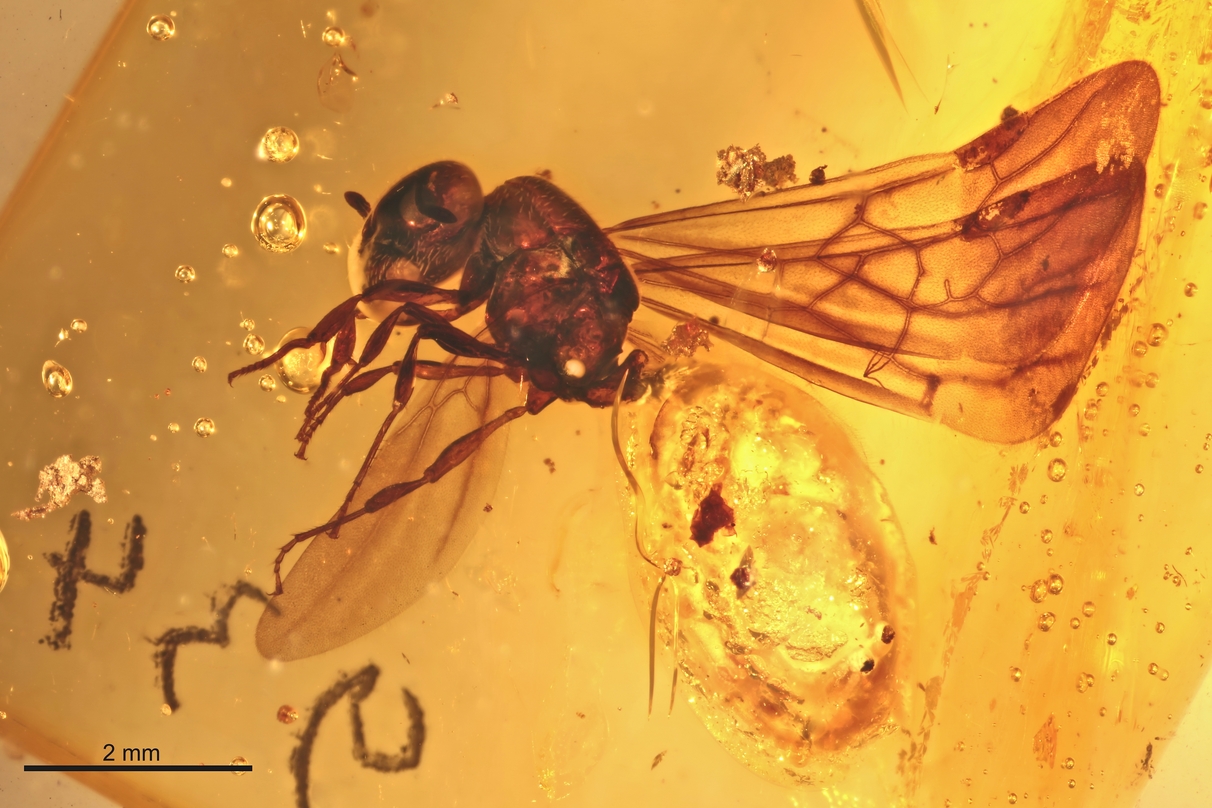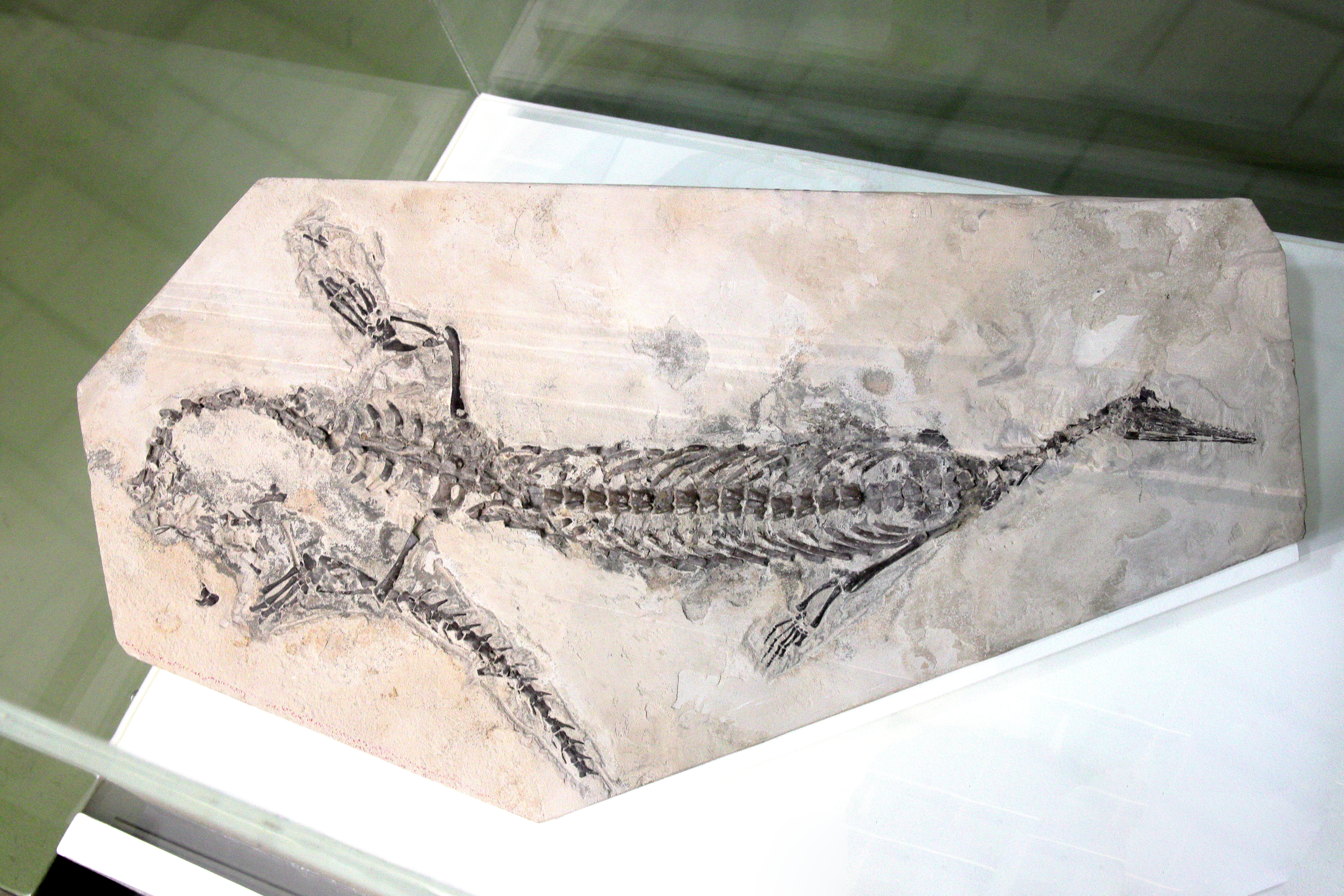|
Brazilosaurus
''Brazilosaurus'' is an extinct genus of mesosaur which lived during the early Permian ( Artinskian stage) of what is now Brazil. It is known from specimen BSPG 1965 I 131, a single skeleton recovered from the Assistencia Member of the Irati Formation ( Hanayama Farm, Tatuí, São Paulo), in the Paraná Basin. It was named by T. Shikama and H. Ozaki in 1966 and the type species is ''Brazilosaurus sanpauloensis''. ''Brazilosaurus'' is not to be confused with the archosaur ''Brasileosaurus ''Brasileosaurus'' (meaning "Brazil lizard") is a genus of notosuchid notosuchian from the Late Cretaceous Adamantina Formation of Brazil. The type species is ''B. pachecoi'', discovered by the Brazilian Eng. Joviano Pacheco and described by th ...''. References Parareptiles Prehistoric reptile genera Prehistoric marine reptiles Permian reptiles of South America Permian Brazil Fossils of Brazil Paraná Basin Fossil taxa described in 1966 {{permian-reptile-stub ... [...More Info...] [...Related Items...] OR: [Wikipedia] [Google] [Baidu] |
1966 In Paleontology
Arthropods Newly named Insecta Conodonts Anapsids Newly named mesosaurs Dinosaurs Newly named dinosaurs Data courtesy of George Olshevsky's dinosaur genera list. Newly named birds References {{reflist, 30em Paleontology ... [...More Info...] [...Related Items...] OR: [Wikipedia] [Google] [Baidu] |
Mesosaur
Mesosaurs ("middle lizards") were a group of small aquatic reptiles that lived during the early Permian period, roughly 299 to 270 million years ago. Mesosaurs were the first known aquatic reptiles, having apparently returned to an aquatic lifestyle from more terrestrial ancestors. It is uncertain which and how many terrestrial traits these ancestors displayed; recent research cannot establish with confidence if the first amniotes were fully terrestrial, or only amphibious. Most authors consider mesosaurs to have been aquatic, although adult animals may have been amphibious, rather than completely aquatic, as indicated by their moderate skeletal adaptations to a semiaquatic lifestyle.Pablo Nuñez Demarco et al. Was Mesosaurus a Fully Aquatic Reptile? Front. Ecol. Evol, published online July 27, 2018; doi: 10.3389/fevo.2018.00109 Similarly, their affinities are uncertain; they may have been among the most basal sauropsids or among the most basal parareptiles (in the case of whic ... [...More Info...] [...Related Items...] OR: [Wikipedia] [Google] [Baidu] |
Brasileosaurus
''Brasileosaurus'' (meaning "Brazil lizard") is a genus of notosuchid notosuchian from the Late Cretaceous Adamantina Formation of Brazil. The type species is ''B. pachecoi'', discovered by the Brazilian Eng. Joviano Pacheco and described by the prolific German paleontologist Friedrich von Huene in 1931. ''Brasileosaurus'' is not to be confused with the mesosaur '' Brazilosaurus''. Classification Although originally classified as a coelurosaur in the original description, it was later recognized as being a crocodylomorph, possibly synonymous with ''Uruguaysuchus ''Uruguaysuchus'' is an extinct genus of crocodylomorphs from the Late Cretaceous Guichón Formation of Uruguay. It was related to ''Simosuchus ''Simosuchus'' (meaning "pug-nosed crocodile" in Greek, referring to the animal's blunt snout) is ...''. In his description of '' Sebecus'', George Gaylord Simpson assigned ''Brasileosaurus'' to Notosuchidae, noting similarities with members of Mesoeucrocodylia.Simpso ... [...More Info...] [...Related Items...] OR: [Wikipedia] [Google] [Baidu] |
Early Permian
01 or '01 may refer to: * The year 2001, or any year ending with 01 * The month of January * 1 (number) Music * '01 (Richard Müller album), 01'' (Richard Müller album), 2001 * 01 (Son of Dave album), ''01'' (Son of Dave album), 2000 * 01 (Urban Zakapa album), ''01'' (Urban Zakapa album), 2011 * O1 (Hiroyuki Sawano album), ''O1'' (Hiroyuki Sawano album), 2015 * 01011001, the seventh studio album from Arjen Anthony Lucassen's Ayreon project Other uses * 01 (telephone number), United Kingdom internal dialing code for London between the late 1950s and 1990 * Lynk & Co 01, a compact SUV built since 2017 * Zero One also known as ''Machine City'', a city-state from the ''The Matrix (series), Matrix'' series * Kolmogorov's zero-one law, a law of probability theory * Pro Wrestling ZERO1-MAX, a wrestling promotion formerly known as Pro Wrestling ZERO-ONE * BAR 01, a Formula One chassis * The number of the French department Ain * The codename given to the Wing Gundam by Oz in the anime ''G ... [...More Info...] [...Related Items...] OR: [Wikipedia] [Google] [Baidu] |
Paraná Basin
The Paraná Basin ( pt, Bacia do Paraná, es, Cuenca del Paraná) is a large cratonic sedimentary basin situated in the central-eastern part of South America. About 75% of its areal distribution occurs in Brazil, from Mato Grosso to Rio Grande do Sul states. The remainder area is distributed in eastern Paraguay, northeastern Argentina and northern Uruguay. The shape of the depression is roughly Ellipse, elliptical and covers an area of about . The Paraná River, from which the Paraná Basin derived its name, flows along the central axis of the Paraná Basin and drains it. Description The Paraná Basin stretches from the Brazilian state of Mato Grosso in the north to northern Argentina and Uruguay in the south. The southern portion in Uruguay is locally known as Norte Basin.De Santa Ana et al., 2004, p.88Daners et al., 2006, p.148 Pioneer studies The first study on the Brazilian side of the Paraná Basin dates from 1841, when a Brazilian Empire, Brazilian Imperial Govern ... [...More Info...] [...Related Items...] OR: [Wikipedia] [Google] [Baidu] |
Permian Brazil
The Permian ( ) is a geologic period and stratigraphic system which spans 47 million years from the end of the Carboniferous Period million years ago (Mya), to the beginning of the Triassic Period 251.9 Mya. It is the last period of the Paleozoic Era; the following Triassic Period belongs to the Mesozoic Era. The concept of the Permian was introduced in 1841 by geologist Sir Roderick Murchison, who named it after the region of Perm in Russia. The Permian witnessed the diversification of the two groups of amniotes, the synapsids and the sauropsids (reptiles). The world at the time was dominated by the supercontinent Pangaea, which had formed due to the collision of Euramerica and Gondwana during the Carboniferous. Pangaea was surrounded by the superocean Panthalassa. The Carboniferous rainforest collapse left behind vast regions of desert within the continental interior. Amniotes, which could better cope with these drier conditions, rose to dominance in place of their amphibian ... [...More Info...] [...Related Items...] OR: [Wikipedia] [Google] [Baidu] |
Permian Reptiles Of South America
The Permian ( ) is a geologic period and stratigraphic system which spans 47 million years from the end of the Carboniferous Period million years ago (Mya), to the beginning of the Triassic Period 251.9 Mya. It is the last period of the Paleozoic Era; the following Triassic Period belongs to the Mesozoic Era. The concept of the Permian was introduced in 1841 by geologist Sir Roderick Murchison, who named it after the region of Perm in Russia. The Permian witnessed the diversification of the two groups of amniotes, the synapsids and the sauropsids (reptiles). The world at the time was dominated by the supercontinent Pangaea, which had formed due to the collision of Euramerica and Gondwana during the Carboniferous. Pangaea was surrounded by the superocean Panthalassa. The Carboniferous rainforest collapse left behind vast regions of desert within the continental interior. Amniotes, which could better cope with these drier conditions, rose to dominance in place of their amphib ... [...More Info...] [...Related Items...] OR: [Wikipedia] [Google] [Baidu] |
Prehistoric Marine Reptiles
Prehistory, also known as pre-literary history, is the period of human history between the use of the first stone tools by hominins 3.3 million years ago and the beginning of recorded history with the invention of writing systems. The use of symbols, marks, and images appears very early among humans, but the earliest known writing systems appeared 5000 years ago. It took thousands of years for writing systems to be widely adopted, with writing spreading to almost all cultures by the 19th century. The end of prehistory therefore came at very different times in different places, and the term is less often used in discussing societies where prehistory ended relatively recently. In the early Bronze Age, Sumer in Mesopotamia, the Indus Valley Civilisation, and ancient Egypt were the first civilizations to develop their own scripts and to keep historical records, with their neighbors following. Most other civilizations reached the end of prehistory during the following Iron Age. T ... [...More Info...] [...Related Items...] OR: [Wikipedia] [Google] [Baidu] |
Prehistoric Reptile Genera
Prehistory, also known as pre-literary history, is the period of human history between the use of the first stone tools by hominins 3.3 million years ago and the beginning of recorded history with the invention of writing systems. The use of symbols, marks, and images appears very early among humans, but the earliest known writing systems appeared 5000 years ago. It took thousands of years for writing systems to be widely adopted, with writing spreading to almost all cultures by the 19th century. The end of prehistory therefore came at very different times in different places, and the term is less often used in discussing societies where prehistory ended relatively recently. In the early Bronze Age, Sumer in Mesopotamia, the Indus Valley Civilisation, and ancient Egypt were the first civilizations to develop their own scripts and to keep historical records, with their neighbors following. Most other civilizations reached the end of prehistory during the following Iron Age. T ... [...More Info...] [...Related Items...] OR: [Wikipedia] [Google] [Baidu] |
Parareptiles
Parareptilia ("at the side of reptiles") is a subclass or clade of basal sauropsids (reptiles), typically considered the sister taxon to Eureptilia (the group that likely contains all living reptiles and birds). Parareptiles first arose near the end of the Carboniferous period and achieved their highest diversity during the Permian period. Several ecological innovations were first accomplished by parareptiles among reptiles. These include the first reptiles to return to marine ecosystems ( mesosaurs), the first bipedal reptiles (bolosaurids such as '' Eudibamus''), the first reptiles with advanced hearing systems ( nycteroleterids and others), and the first large herbivorous reptiles (the pareiasaurs). The only parareptiles to survive into the Triassic period were the procolophonoids, a group of small generalists, omnivores, and herbivores. The largest family of procolophonoids, the procolophonids, rediversified in the Triassic, but subsequently declined and became extinct ... [...More Info...] [...Related Items...] OR: [Wikipedia] [Google] [Baidu] |
Archosaur
Archosauria () is a clade of diapsids, with birds and crocodilians as the only living representatives. Archosaurs are broadly classified as reptiles, in the cladistic sense of the term which includes birds. Extinct archosaurs include non-avian dinosaurs, pterosaurs, and extinct relatives of crocodilians. Modern paleontologists define Archosauria as a crown group that includes the most recent common ancestor of living birds and crocodilians, and all of its descendants. The base of Archosauria splits into two clades: Pseudosuchia, which includes crocodilians and their extinct relatives, and Avemetatarsalia, which includes birds and their extinct relatives (such as non-avian dinosaurs and pterosaurs). Older definitions of the group Archosauria rely on shared morphological characteristics, such as an antorbital fenestra in the skull, serrated teeth, and an upright stance. Some extinct reptiles, such as proterosuchids and euparkeriids, possessed these features yet originated pri ... [...More Info...] [...Related Items...] OR: [Wikipedia] [Google] [Baidu] |
Type Species
In zoological nomenclature, a type species (''species typica'') is the species name with which the name of a genus or subgenus is considered to be permanently taxonomically associated, i.e., the species that contains the biological type specimen(s). Article 67.1 A similar concept is used for suprageneric groups and called a type genus. In botanical nomenclature, these terms have no formal standing under the code of nomenclature, but are sometimes borrowed from zoological nomenclature. In botany, the type of a genus name is a specimen (or, rarely, an illustration) which is also the type of a species name. The species name that has that type can also be referred to as the type of the genus name. Names of genus and family ranks, the various subdivisions of those ranks, and some higher-rank names based on genus names, have such types. [...More Info...] [...Related Items...] OR: [Wikipedia] [Google] [Baidu] |








_(2).jpg)